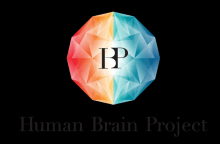The 24-month long project was funded by the competitive calls programmed for adding additional beneficiaries to the FP7 FET Flagship Human Brain Project (HBP) to two partners, the University of Maastricht, The Netherlands and the University of Nicosia, Cyprus. The team at UNIC is comprised by principal investigator Dr Avgis Hadjipapas (Associate Professor at the University of Nicosia Medical School) and a post-doctoral researcher, Dr Margarita Zachariou. This work is integrated into the “Cognitive Architectures” Topic of the HBP.
Much of what we know about how the brain works comes from measuring signals from individual cells and especially from primary visual areas of the brain in animal models such as the cat and the monkey. In the last few decades direct measurements of activity in networks of cells in the animal and also, non-invasive measurements of the activity of the visual brain in the human have become increasingly available. However, how these signals at different scales (single cells, local networks, entire brain areas) relate to each other is still largely unknown. Identifying these links however is crucial in order to understand how individual cells organize in local groups and then in entire functionally- specialized areas. The scope of this project is to establish such links between these signals during fast rhythmic activity, which is important for perception. Experimental data at multiple spatial scales are used to inform and constrain computational models of networks of nerve cells. A paper detailing a principled comparison of signals recorded in the monkey: single cells, local networks, and human magnetoencephalographic (MEG) recordings has now been published (NeuroImage). Further, the computational modeling approach and initial results have been presented in international conferences and HBP meetings, including the Computational Neuroscience meeting CNS 2015 in Prague (proceedings published in BMC Neuroscience).

